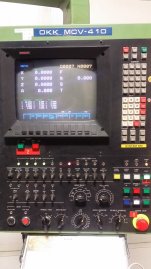Hello Kevin,
Its more likely the small tool movement that slowed the program down, more so than the math. I demonstrated the affect of small tool movement to a client when switching AI on and off. With AI off, a first program with a movement in X from Absolute X0.0 to X1000.0 at a feed rate of F1000 was executed, the movement took one minute to complete. The next example was with a program movement from X0.0 to X1000.0 made up of 4000, 0.25mm X movements, the 1000.0mm X movement took considerable time to complete. The second program was repeated with AI turned on and the 1000.0mm X movement was completed in one minute. A third program was executed with Ai turned on, with the 4000 X0.25mm movements dithering back and forth; this program took the same time as the straight line, 4000 x 0.25mm X movement program with AI turned off.
Regards,
Bill



